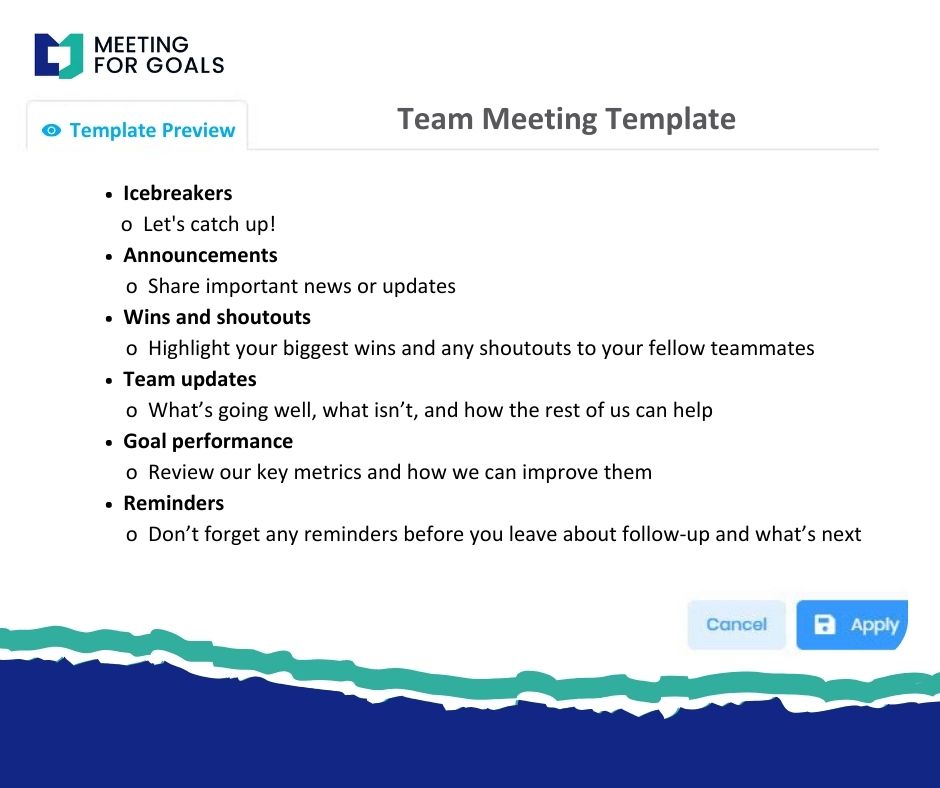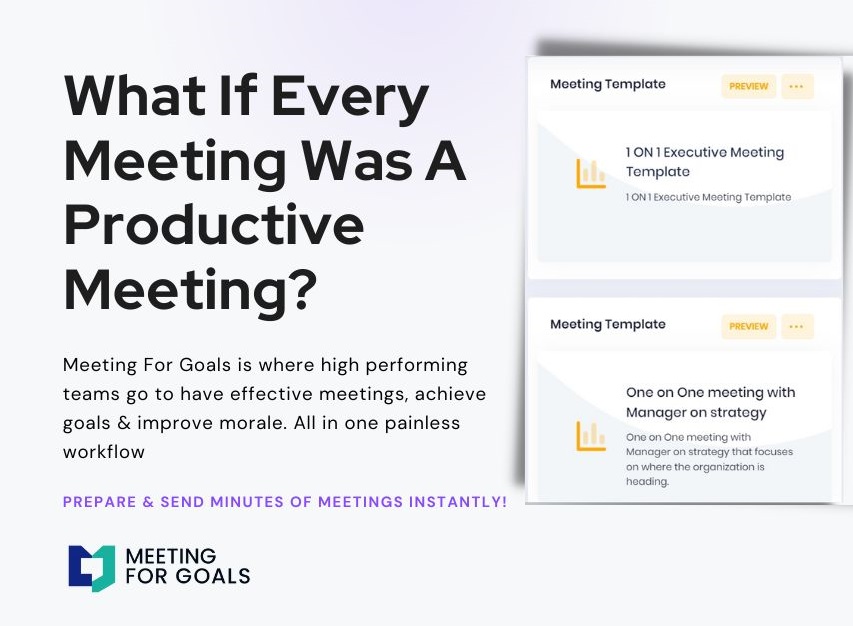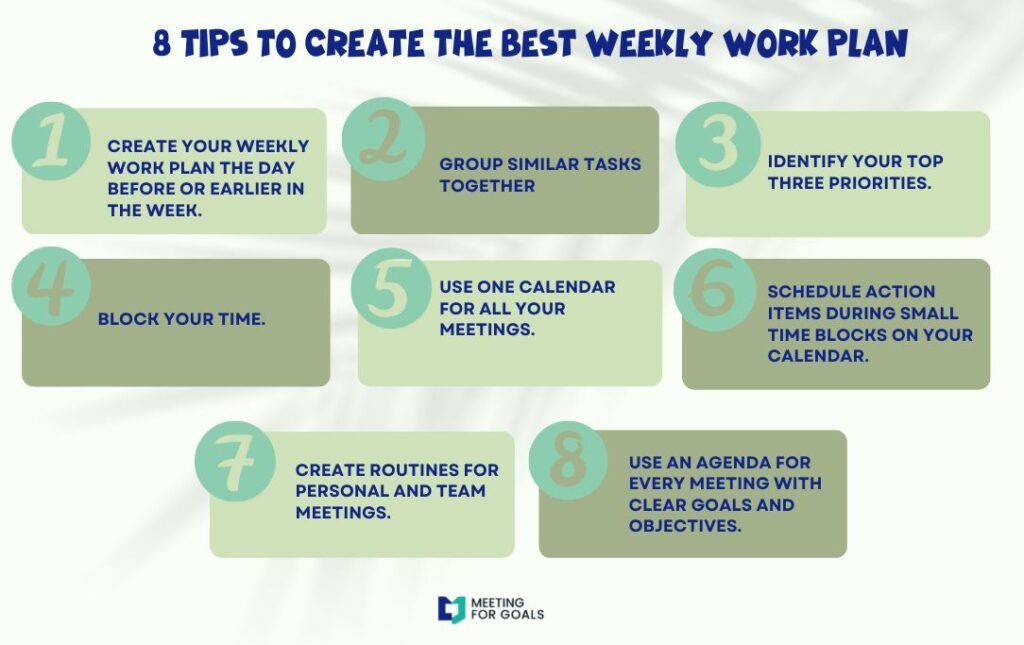Levels of Listening for Effective Meeting Communication
In today’s fast-paced corporate world, effective communication is the backbone of high-performing teams. Yet, countless meetings fall short of their potential due to one simple issue: poor listening. Not just hearing—but truly listening at the right level for the right context.
Whether you’re a VP of Operations, a Director of Strategy, or a C-suite executive leading a team of 40 to 70 employees, understanding the levels of listening can be the game-changer your organization needs. In this article, we dive deep into the three core levels of listening—Empathic, Critical, and Surface—and show how mastering them can elevate your meetings, align your team with company goals, and ultimately, drive results.
With insights tailored for leaders and powered by the meeting management capabilities of Meeting For Goals, this guide is your roadmap to more productive, goal-oriented meetings. If you’re ready to improve your meeting culture, start by exploring our free meeting templates or sign up today at Meeting For Goals.
I. Introduction
Meetings are where strategies are built, decisions are made, and teams align. But even with modern tools and software, many meetings still drag on with little to show for them. Why? Because of ineffective listening.
Listening isn’t just about hearing words. It’s about understanding, interpreting, and responding in a way that moves the conversation—and the team—forward.
For companies with 40 to 70 employees, where collaboration and coordination between departments are essential, effective listening is a must-have leadership skill. And that’s where understanding the different levels of listening comes in.
At Meeting For Goals, we help companies streamline their meetings with tools that promote clarity, accountability, and alignment. But even the best software can’t fix poor listening habits. That’s why this guide focuses on the human side of meetings—how you listen, how your team listens, and how that impacts performance.
In the sections that follow, we’ll break down the three levels of listening—Empathic, Critical, and Surface. You’ll learn how to use each one effectively, when to switch between them, and how to build a culture of active listening across your organization.
2 Minute Video
Watch a 2 minute demo of our meeting management software in action
II. Understanding the Levels of Listening
Listening is more than being quiet while someone else talks. It’s about being mentally present and emotionally aware. In meetings, the way you listen can shape everything from team morale to strategic outcomes.
There are three core levels of listening found in most workplace interactions:
- Empathic Listening
Empathic listening is the most engaged form of listening. It’s about connecting with the speaker on an emotional level and trying to truly understand their perspective.
You’re not just hearing words—you’re reading tone, body language, and unspoken cues. This level of listening is key when emotions run high or when trust needs to be built.
Key traits of empathic listening:
- Full, undivided attention
- Open body posture
- Reflective responses like “It sounds like you’re saying…”
- No interruptions or quick fixes
This type of listening is powerful in conflict resolution, one-on-ones, or brainstorming sessions where psychological safety matters. According to the Center for Creative Leadership, leaders who listen with empathy are more effective at motivating and retaining employees.
- Critical Listening
Critical listening is about analysis. It’s where you evaluate what’s being said, question assumptions, and assess the logic behind ideas.
This level is essential for strategy meetings, performance reviews, and decision-making sessions. It helps teams avoid groupthink and ensures that choices are grounded in data and logic.
Key traits of critical listening:
- Asking clarifying questions
- Evaluating evidence and logic
- Identifying inconsistencies
- Offering thoughtful, constructive feedback
By using critical listening, leaders can challenge ideas respectfully and guide their teams toward better outcomes.
- Surface Listening
Surface listening is the most common—and least effective—form of listening. It’s when someone hears the words but doesn’t really engage. They may be distracted, waiting for their turn to speak, or just going through the motions.
This kind of listening leads to:
- Misunderstandings
- Missed opportunities
- Frustrated team members
While it’s sometimes unavoidable, surface listening should be the exception, not the norm—especially in meetings that require alignment or decision-making.
When you understand the differences between these listening levels, you can be intentional about how you listen—and how you lead.
Adding an Agenda
How to add an agenda instantly on Meeting For Goals
III. The Role of Empathic Listening in Team Meetings
Empathic listening is a game-changer for team culture. It builds trust, encourages openness, and creates a space where people feel heard and valued.
In meetings, especially those involving cross-functional collaboration or sensitive topics, empathic listening can make the difference between a disengaged team and a high-performing one.
Techniques for Practicing Empathic Listening
Empathic listening doesn’t just happen—it takes effort. Here are a few practical ways to build this skill:
- Put away distractions. Phones, laptops, and side conversations send the message that you’re not fully present.
- Use body language to show engagement. Nod, maintain eye contact, and lean in slightly.
- Reflect back what you hear. Say things like, “So what I’m hearing is…” or “It sounds like you’re feeling…”.
- Pause before responding. Give the speaker space to finish and clarify.
- Ask open-ended questions. These encourage deeper discussion and show genuine interest.
These small habits create a big impact. When leaders model empathic listening, it sets the tone for the entire meeting.
Advantages for Team Cohesion and Collaboration
Empathic listening fosters psychological safety. When people feel safe, they’re more likely to share ideas, ask questions, and admit when they need help.
This openness leads to better collaboration, stronger relationships, and more innovative thinking. In mid-sized companies where cross-functional work is common, empathic listening ensures that every voice is heard.
Real-World Example
Let’s say a team member expresses frustration about a missed deadline. A surface listener might ignore it. A critical listener might suggest new processes. But an empathic listener would ask, “What’s been challenging for you?” and then listen without judgment.
By understanding the root cause—maybe the employee is overloaded or unclear on priorities—you can address the real issue and strengthen the team dynamic.
At Meeting For Goals, we make it easier to build these habits into your meetings. Our platform includes structured check-ins and feedback loops to help teams connect on a human level while staying focused on goals.
IV. Utilizing Critical Listening to Drive Results
While empathic listening builds trust, critical listening drives results. It’s essential for making informed decisions, solving problems, and aligning strategies with company goals.
Importance in Decision-Making and Problem-Solving
Critical listening helps leaders:
- Identify flawed reasoning
- Spot gaps in logic
- Evaluate ideas based on evidence
- Make decisions that align with long-term objectives
In a strategic planning meeting, for example, critical listening ensures that all ideas are vetted thoroughly before moving forward. It prevents rushed decisions and helps teams stay focused on what really matters.
How to Develop Critical Listening Skills
Here’s how to build critical listening into your meeting habits:
- Come prepared. Review the agenda and relevant materials beforehand.
- Take notes. This helps you track key points and follow up later.
- Ask questions like, “What’s the data behind this?” or “How does this align with our priorities?”
- Encourage diverse opinions. This avoids groupthink and leads to better outcomes.
- Summarize key takeaways. This ensures clarity and consensus before the meeting ends.
These practices not only improve your own listening but also set a higher standard for your team.
Case Study: Product Launch Proposal
Imagine a department head proposes a new product. A surface listener might nod and move on. An empathic listener might focus on the team’s excitement. But a critical listener would ask:
- What’s the customer demand?
- How does this fit into our current roadmap?
- What’s the projected ROI?
By asking the right questions, the team avoids distractions and focuses on strategic priorities.
At Meeting For Goals, our platform supports critical listening with tools like goal tracking, decision logs, and action item summaries. This way, nothing gets lost in post-meeting chaos.
V. Overcoming the Pitfalls of Surface Listening
Surface listening is one of the biggest reasons meetings fail. It’s when people are physically present but mentally checked out.
In a team setting, this leads to:
- Repeated conversations
- Confusion about next steps
- Lower morale
It also sends the message that the meeting—and the people in it—aren’t worth your full attention.
Why Surface Listening Happens
Common causes include:
- Overloaded schedules
- Poorly structured meetings
- Lack of engagement or purpose
If your meetings are too long, unfocused, or irrelevant, people will tune out.
Strategies to Encourage Deeper Listening
To minimize surface listening:
- Keep meetings short and focused. Stick to the agenda.
- Assign roles. A facilitator, timekeeper, and note-taker keep everyone involved.
- Start with a quick check-in. This gets everyone engaged from the start.
- Use interactive tools like polls or breakout rooms.
- End with clear action items. This reinforces accountability.
Leaders should also model active listening. If you’re checking your phone or multitasking, others will follow your lead.
Shifting to Higher Listening Levels
Help your team move from surface to deeper listening by asking:
- “What’s your take on this?”
- “How does this impact your team?”
- “What concerns do you have?”
These questions invite more thoughtful responses and signal that their input matters.
Meeting For Goals helps reduce surface listening by keeping meetings structured, time-boxed, and goal-oriented. With built-in accountability, everyone knows their voice counts.
VI. Conclusion
Listening isn’t just a soft skill—it’s a leadership superpower. By mastering the three levels of listening—Empathic, Critical, and Surface—you can turn your meetings into engines of clarity, trust, and execution.
Empathic listening builds relationships. Critical listening drives smart decisions. And recognizing surface listening helps you fix communication breakdowns before they derail your team.
As a leader, you set the tone. When you listen intentionally, your team follows. The result? Shorter, more impactful meetings that move your company forward.
Ready to take your meetings to the next level? Visit Meeting For Goals to explore how our platform can help you foster better listening, drive alignment, and turn every meeting into a strategic advantage.
Don’t forget to check out our free meeting templates or sign up now at Meeting For Goals to start leading more productive, goal-oriented meetings today.
External Resources:
Word Count: Approx. 2,100 words.



